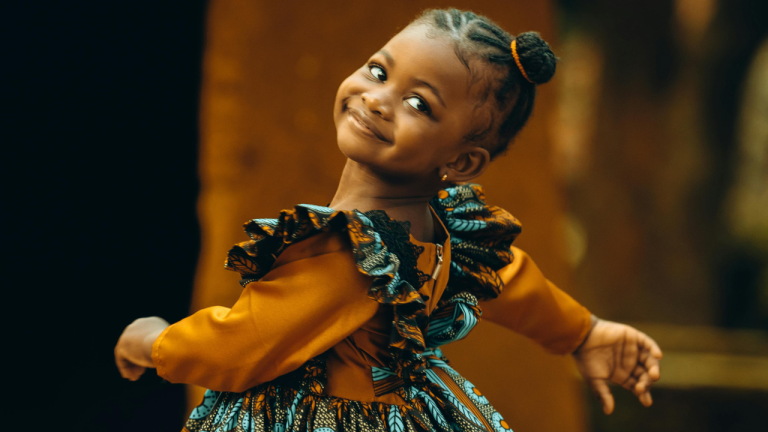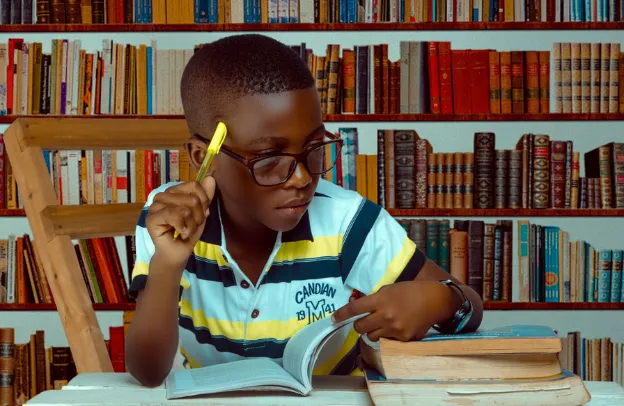Explore Traditional African Storytelling as a Powerful Educational Tool in “Amende – The Stream Water”

Long before backpacks bulged with books and learning apps blinked from tiny screens, the first library many African children knew was not made of walls or shelves. She sat on a wooden stool, her voice seasoned with songs, her eyes lined with stories. She was the grandmother, the first librarian, the first teacher, the first memory-keeper.
Learn How to Leverage Your Story through our Story To Asset Framework.
In communities like Esanland in southern Nigeria, knowledge was not just written. It was spoken, sung, danced, and remembered. It lived in the breath between generations.
You can get a clearer picture of this from one of Obehi’s books, “Amende – The Stream Water”. Amende is a story rooted in the profound journey of healing, both human and ecological. From its very title, the narrative signals a dual restoration: one enacted by Nature, the other by people. “Amende,” the name of the young protagonist, is not chosen by chance.
As revealed by his dying mother to Etusi, the wise elder woman who becomes both mother and father to the boy, his name is drawn from the stream, a symbol of life and renewal. But “Amende” also resonates with the English verb “to amend”: to correct, to restore, and to make right.
In this way, Amende becomes more than a tale of survival; but also a poetic meditation on the cyclical nature of repair, where healing the land mirrors the mending of hearts.
Although Obehi had not yet begun teaching the art of storytelling or written his five-part book series The Storytelling Mastery, the journey truly began with Amende, and it started not on the page, but with the spoken word. The opening chapter unfolds through oral storytelling, a daily ritual in the village of Okpujie. Each evening, all the children would gather beneath the great tree to listen to the village storyteller. It wasn’t just entertainment, it was ceremony, memory, and learning woven together.
This scene is more than literary fiction; it reflects a living tradition in Esanland, where storytelling comes as naturally as breathing. Among the Esan people, storytelling isn’t taught; it is lived. And in that living, it becomes one of the most powerful tools for shaping memory, identity, and community in the minds of children.
Learning with Ears and Hearts
In much of traditional Africa, education began not with textbooks but with listening. Children absorb knowledge not by memorizing dates or definitions, but by being present, by listening with their whole bodies.
Learning came through stories that taught courage, kindness, patience, and pride. These weren’t fairy tales for entertainment. They were survival strategies, moral frameworks, and cultural blueprints passed down through orature, oral tradition as a form of curriculum.
Kenyan writer Ngũgĩ wa Thiong’o describes orature as a tool of resistance and self-definition. In Decolonising the Mind, he reminds us that oral traditions are not primitive relics, but active engines of identity. They tell the child, “You are not invisible. Your story matters. Your memory is valid.”
See also The Color Purple: 6 Lessons For Beginner Storytellers – Learning From The Masters
Published in 1986, Decolonising the Mind is a powerful collection of essays in which Ngũgĩ wa Thiong’o explores the deep connections between language, culture, and identity in post-colonial Africa. He argues that the continued dominance of colonial languages like English and French reinforces psychological and cultural domination, undermining African self-expression, heritage, and autonomy.
Proverbs: Tiny Stories, Lasting Lessons
Not all lessons come in the form of long stories. Sometimes, wisdom arrives in small packages—African proverbs, short and sharp, designed to stick. These phrases are mental handholds, cultural anchors, and intergenerational time capsules.
A 2020 study in Frontiers in Psychology confirmed what African grandmothers have long known: children retain more information when it is delivered with rhythm, repetition, and emotion, all core components of orature.
In the African worldview, memory is not static. It is kinetic, emotional, and embodied.
Old Wisdom in Modern Classrooms
Today, African children are often educated in formal settings, seated at desks, staring at screens. Yet the traditional tools of memory have not lost their value; in fact, they are more important than ever. The old ways offer solutions to modern challenges like low engagement, weak comprehension, and cultural disconnect.
Innovative educators across the continent are reintroducing memory-based learning into schools. In South Africa, the Nal’ibali literacy campaign (is a national reading-for-enjoyment campaign, founded in 2012, in South Africa) uses local stories in children’s home languages to promote reading. These aren’t generic narratives; they reflect the children’s lived experiences and cultural context.
Parents and Elders: The Original Teachers
While teachers carry great responsibility, parents and elders remain the child’s first and most influential educators. Bedtime stories, morning songs, and family proverbs are all daily opportunities for memory-building.
A walk to school becomes a moment for a proverb. A shared meal becomes a chance to retell a tale. These micro-moments of memory, when practiced with intention, can transform a child’s confidence, language skills, and worldview.
See also Memory as Heritage: How to Protect the Esan Identity Through Education
And when elders share stories at gatherings or ceremonies, they are not simply entertaining; they are enacting education. They are showing children that their heritage is worth passing on.
Here are three effective ways to promote memory building in children through the influence of parents and elders:
- Use Daily Routines as Memory Moments: Transform everyday activities, like walking to school or sharing a meal, into moments of learning by incorporating proverbs, storytelling, or song. These informal, repeated exchanges help strengthen memory and reinforce cultural values.
- Tell and Retell Family Stories: Make storytelling a regular family ritual, whether at bedtime or during gatherings. When children hear the same tales and are encouraged to retell them, they not only improve memory recall but also deepen their connection to their roots.
- Empower Elders as Cultural Educators: Encourage elders to actively participate in a child’s learning journey. Their stories, songs, and lived experiences serve as living textbooks that teach history, identity, and life lessons, all while strengthening intergenerational memory transfer.
Memory Builds Bravery
In a world that constantly asks children to adapt, conform, and compete, memory gives them something solid. It reminds them that they are not starting from scratch. They carry strength within them, strength born of stories, names, songs, and lessons that have survived oceans and centuries.
This is more than poetic; it is practical. A grounded child is a resilient child. A child who knows their story is harder to erase, easier to uplift.
Molefi Kete Asante writes in The History of Africa that cultural memory is the soul of African education. It creates harmony between knowledge, self, and society. When we center memory in learning, we don’t just teach better, we raise wiser, braver human beings.
The Living Library
So yes, grandmother was the first library. But she was never the only one. Every elder is a volume. Every proverb is a page. Every song is a chapter in a living curriculum. In African culture, memory is not stored; it is shared.
Educators today need not choose between chalkboards and chants, between Google and griots. The real power comes from blending both. When modern tools meet ancient memories, learning becomes joyful, rhythmic, and whole.
- A child who remembers a story becomes a storyteller.
- A storyteller becomes a leader.
- And a leader shapes the world.
Because when we remember, we rise. And when we rise with memory, we rise together.
Learn How to Leverage Your Story through our Story To Asset Framework.






